18 Birds of Uganda: Birding in the Pearl of Africa (8 Top Birding Sites)
Heading to Uganda? Here are 18 birds of Uganda, ranging from the tiny black bee-eater to the large and weirdly-cute shoebill stork. Uganda is a top birding destination – and for good reason.
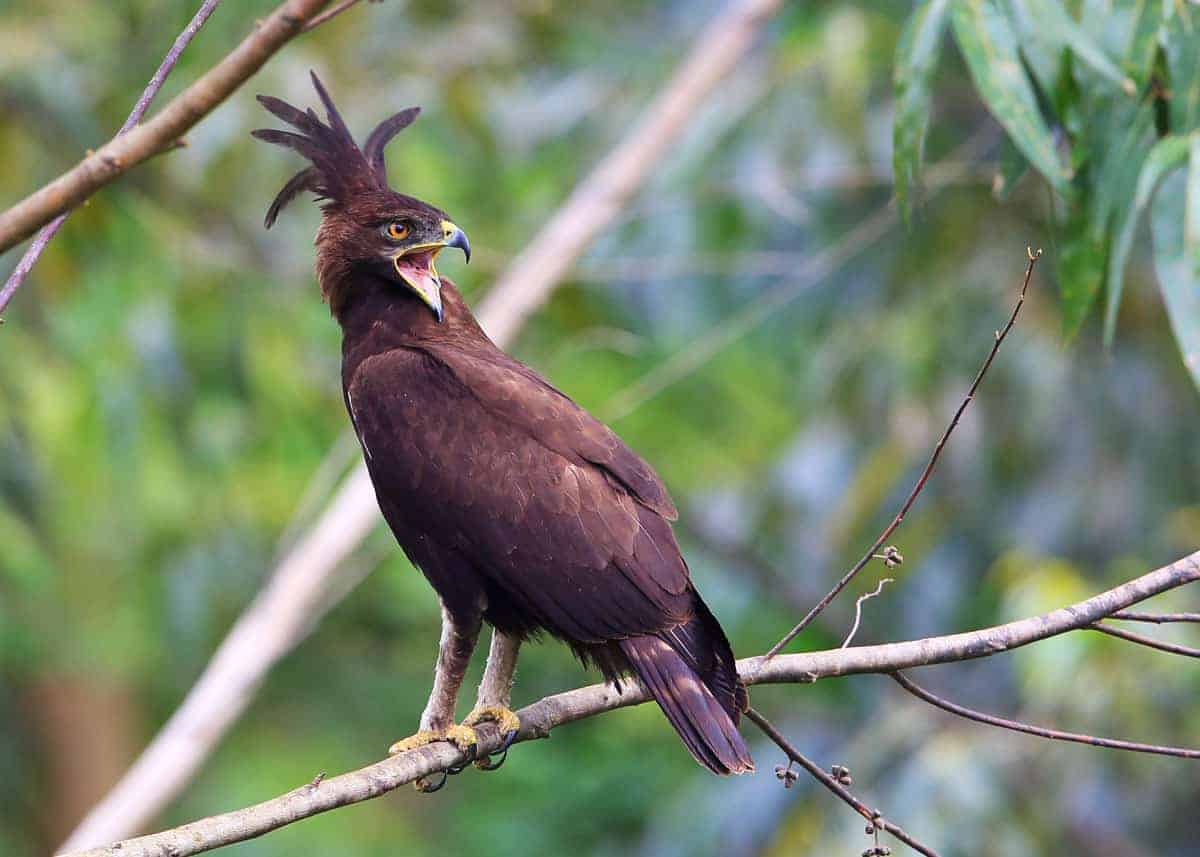
18 Birds of Uganda: Birding in the Pearl of Africa
Uganda is a bird lover’s paradise, boasting more than 1,000 different bird species. The country’s diverse landscapes and ecosystems provide ideal habitats for various species that range from exotic forest birds to tall water cranes and majestic birds of prey.
Top 8 Birding Sites in Uganda
No matter where you go in Uganda, you will never be far from a reserve or national park where you can go birdwatching.
Some of the most popular birding places in Uganda include:
- Mgahinga Gorilla National Park
- Nyamuriro Swamp
- Bwindi Impenetrable National Park
- Rwenzori Mountains National Park
- Kibale Forest National Park
- Queen Elizabeth National Park
- Kyambura Wildlife Reserve
- Semliki Reserves
Ready to learn more about the amazing birds in Uganda? In this post, we’ll cover 18 bird species:
18 Birds of Uganda: Facts, Photos, and More
Here are the details on each of these 17 birds that you can find in Uganda.
1. Crested Crane
Latin: Balearica regulorum gibbericeps
If you want to see what the crested crane looks like, take a look at the Ugandan flag, which features this national bird.
Standing over 3 feet (1 meter) tall with a 6-foot wingspan, the crested crane only weighs approximately 7 pounds and can live up to 22 years. While many cranes make a gobbling call similar to a turkey, the crested crane honks more like a goose.
Learn more about Uganda’s crested crane
The crested crane loves living among the grassy wetlands of Uganda and rarely migrates. This bird is smart and has learned to protect itself from predators by hiding among cattle herds.
Many birds of Uganda have a mating dance, but the crested crane loves dancing so much that it dances all year round, in and out of mating season.
More reading: 25 amazing animals of Uganda
2. Shoebill
Latin: Balaeniceps rex
Named for its large bill that is shaped like a shoe, the shoebill is one of the most coveted birds among birders. Featuring a prehistoric appearance, the shoebill looks like it survived the dinosaur age.
Without a doubt, this is one of the weirdest birds on the planet.
Uganda Climate Guide: Best Time to Visit (Weather, Rain & Temp by Month…)
While it can be tricky to spot this elusive bird, you will most likely find it around swampy areas such as those found within Murchison Falls National Park, Semliki Wildlife Reserve, Queen Elizabeth National Park, and along the shores of Lake Victoria.
Learn more about the Shoebill Stork.
3. Shelley’s Crimsonwing
Latin: Cryptospiza shelleyi
Your chances of spotting this colorful finch are pretty slim as it is an incredibly shy bird. It flies only short distances and takes cover (most of the time) in bamboo thickets and dense forest growth within the Albertine Rift that borders the Congo, Rwanda and Uganda.
As of 2008, there are only two known photographs in the world of this Crimsonwing. If you are a serious birder intent on glimpsing this rare bird, one of the best places to start in Uganda is Bwindi Impenetrable Forest. Read more about Shelley’s Crimsonwing.
4. Great Blue Turaco
Latin: Corythaeola cristata
Native Africans have traditionally believed that this brilliant bird brings good luck. It is one of the most common birds, but the great blue turaco is also one of the most beautiful birds of Uganda.
More reading: How to Choose the Best Camera for Safari [Buyers Guide]
With a turquoise blue body, yellow breast and reddish-yellow beak, the great blue turaco’s brightly-colored feathers have been used among native African tribes for many generations as a symbol to distinguish tribal leaders.
5. Marabou Stork
Latin: Leptoptilos crumeniferus
There is no mistaking the marabou stork. With cloak-like wings, skinny legs and weird-looking air sacs hanging down from the base of its neck, this tall wading bird is often regarded as one of the ugliest birds of Uganda.
Learn more: Uganda Currency: 12 Things to Know
The marabou’s appearance isn’t the only strange thing about this bird. It has many odd behaviors as well.
For example, instead of flying away from grass fires like other birds, the marabou uses the blazes to its advantage to swoop in and feed on small fleeing animals.
If the marabou gets too hot, it cools off by excreting feces on its legs.
Learn more about the Marabou stork here and here.
6. African Green Broadbill
Latin: Pseudocalyptomena graueri
If you want to see the African green broadbill when visiting Uganda, you will need to go to the Bwindi National Park because this is the only place in the country where this small, elusive bird lives.
This tiny bird features a body of mostly green feathers, with light blue on the throat, breast, and tail as well as a tan forehead with black streaks. While conservationists are putting forth serious efforts to protect this little rare bird, climate change and deforestation continue to threaten its numbers.
7. Doherty’s Bushshrike
Latin: Telophorus dohertyi
If you are trekking through the tropical forests or shrublands, you may hear the loud, territorial whistle of the Doherty’s bushshrike before you ever see it.
One of the more common birds of Uganda, the Doherty’s bushshrike even sports the vivid black, red and yellow colors of the Ugandan flag. This little solitary bird loves to feed on grasshoppers and beetles.
8. Saddle-billed Stork
Latin: Ephippiorhynchus senegalensis
Owing its name to the patch of yellow on its red bill and white back, the saddle-billed stork is noted for several unique facts.
For one, this wading bird is among the tallest in the world, growing to a height of nearly five feet.
More reading: 15 facts about Africa’s saddle-billed stork
Unlike most birds, the saddle-billed stork doesn’t have a vocal organ and only makes sound by clacking its bill. Ancient Egyptian hieroglyphs dating back more than 5,000 years depict this bird to symbolize part of the pharaoh Khaba’s name.
Your best chances for spotting this interesting bird are in Sumuliki National Park and along the Kazinga Channel.
9. Green-Breasted Pitta
Latin: Pitta reichenowi
The green-breasted pitta is one of the most difficult birds of Uganda to spot, making it one of the most sought-after birds. This pitta lives well-camouflaged in the forests of the Kibale National Park.
The best time to catch a glimpse of this bird is in the early mornings between June and August when it flitters about on the forest floor searching for food.
10. Standard-Winged Nightjar
Latin: Caprimulgus longipennis
The standard-winged nightjar is an impressive bird that sleeps by day and flies out at dusk to feed on various insects.
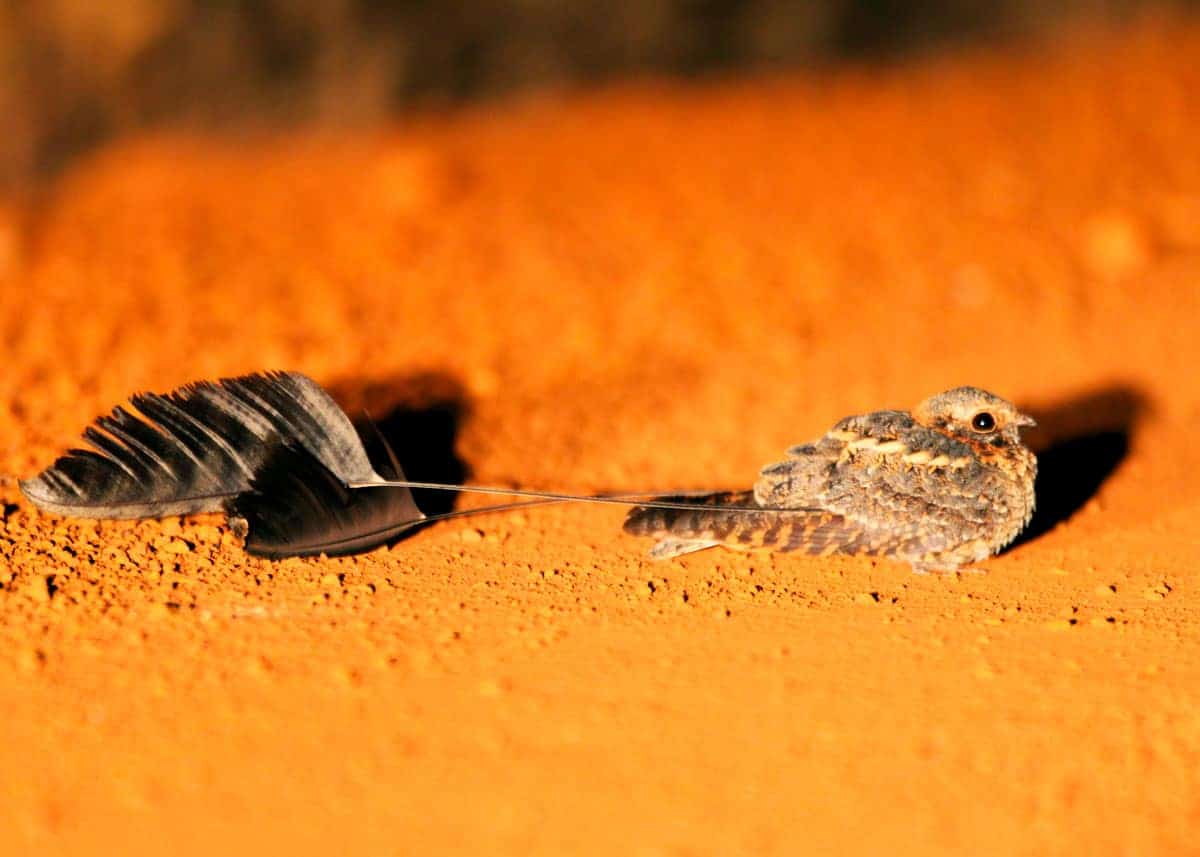
What really sets this nightjar apart from others is the male’s special wing shaft that extends further out behind the body with plumed feathers on the end during mating season.
To attract females, the male can display his ornamental wings vertically during flight. After mating season ends, these decorative wings fall off.
How’s your Swahili? Check out our guide to 100+ animal names in Swahili.
11. Black-Breasted Barbet
Latin: Lybius rolleti
The black-breasted barbet may be difficult to find because it is a solitary bird that likes to nest in dense vegetation and dead trees. However, you can easily distinguish the black-breasted barbet from other black and white birds by its large, white bill.
You will also improve your chances of seeing this barbet by going where fruit trees grow because this bird loves to eat fruits such as mangoes, figs, and guavas. Sadly, there is some concern that the population of this species may be in decline due to deforestation.
12. Bar-tailed Trogon
Latin: Apaloderma vittatum
Another of the rare birds of Uganda, the bar-tailed trogon is seldom seen. A medium-sized bird measuring about 11 inches (28 cm) long, this bird makes its home in high-altitude forests.
Both males and females feature yellow bills and feet with long, wide tails.
The male bar-tailed trogon features a shimmery blue-green or violet breast and iridescent blue-black head with yellow patches above and below the eyes. The female bar-tailed trogon is less brilliant with a brown head and reddish-brown breast and throat.
13. African Spoonbill
Latin: Platalea alba
A member of the ibis family, the African spoonbill is a tall, white waterbird that you will find using its long, spoon-like beak to catch fish and crustaceans in the shallow waters of lakes, rivers, and marshes.
Learn more about the African Spoonbill with these 12 facts.
Growing as large as a human toddler, this spoonbill can live up to 15 years in the wild. A shy bird that likes to stay close to its own kind, this spoonbill is also monogamous and egalitarian with both males and females sharing the responsibilities of caring for their young.
14. Yellow-billed Oxpecker
Latin: Buphagus africanus
You have probably watched nature shows on TV about African wildlife and seen those small birds that hitch a ride along the backs of large mammals like cattle, elephants, hippopotamuses, and zebras.
These birds are called oxpeckers whose entire diet consists of ticks, botfly larvae, and other parasites found in the hide and hair of large mammals. The oxpeckers also feed on the host’s ear wax, dandruff, and blood from open wounds.
While oxpeckers make nests in the holes of trees and walls, they perform their mating routines on the backs of their hosts.
Learn more about oxpeckers in Africa – both species including red and yellow-billed oxpeckers.
15. Long-crested Eagle
Latin: Lophaetus occipitalis
An African bird of prey, the long-crested eagle is aptly named for its long, feathery crest. This small eagle features mostly brown to black plumage, a barred tail, and white feathered legs.
This eagle is predominantly sedentary, preferring to sit and wait for its prey to come along before swooping down upon it. Although it feeds mostly on small rodents, the long-crested eagle will also eat fish, lizards, frogs, and even small birds.
Both male and female long-crested eagles build their nests together. While the female incubates the eggs, the male most often hunts for and feeds the young.
16. Black Bee-Eater
Latin: Merops gularis
One of the more popular birds of Uganda is the black bee-eater. This blue-black bird features a distinctive scarlet throat and shimmering turquoise streaks across the breast.
You will find these birds high in the forest canopies of places like Kibale National Park and Bwindi National Park. If you don’t see them at first, you can listen for their high-pitched sounds of “p’sit p’sit seet.”
17. Chocolate-Backed Kingfisher
Latin: Halcyon badia
You are most likely to spot a chocolate-backed kingfisher perched in a high tree in the lowland rainforest, scanning the area for prey that includes ants, grasshoppers, beetles, and small lizards.
The adult chocolate-backed kingfisher sports a brownish black mantle, white underbelly, iridescent blue rump, and reddish-brown bill. A juvenile is similar to an adult except for a scalloped breast and black bill with an orange tip.
You will know the chocolate-backed kingfisher when you hear it because its sound is a high-pitched screech followed by a mournful song.
18. African Grey Parrot
Latin: Psittacus erithacus
African grey parrots (also known as Congo grey parrots) are famous for their ability to communicate and reason.
And while they are a popular pet, it is illegal to buy and sell wild-caught individuals. In the wild, grey parrots are endangered.
Your Turn
Have you seen any of these Uganda birds? Which ones are on your list?
Whether you are an experienced birder or just beginning the bird-watching hobby, the beautiful and diverse landscapes of Uganda offer you a premier setting to see some of the world’s most unique and fascinating birds.

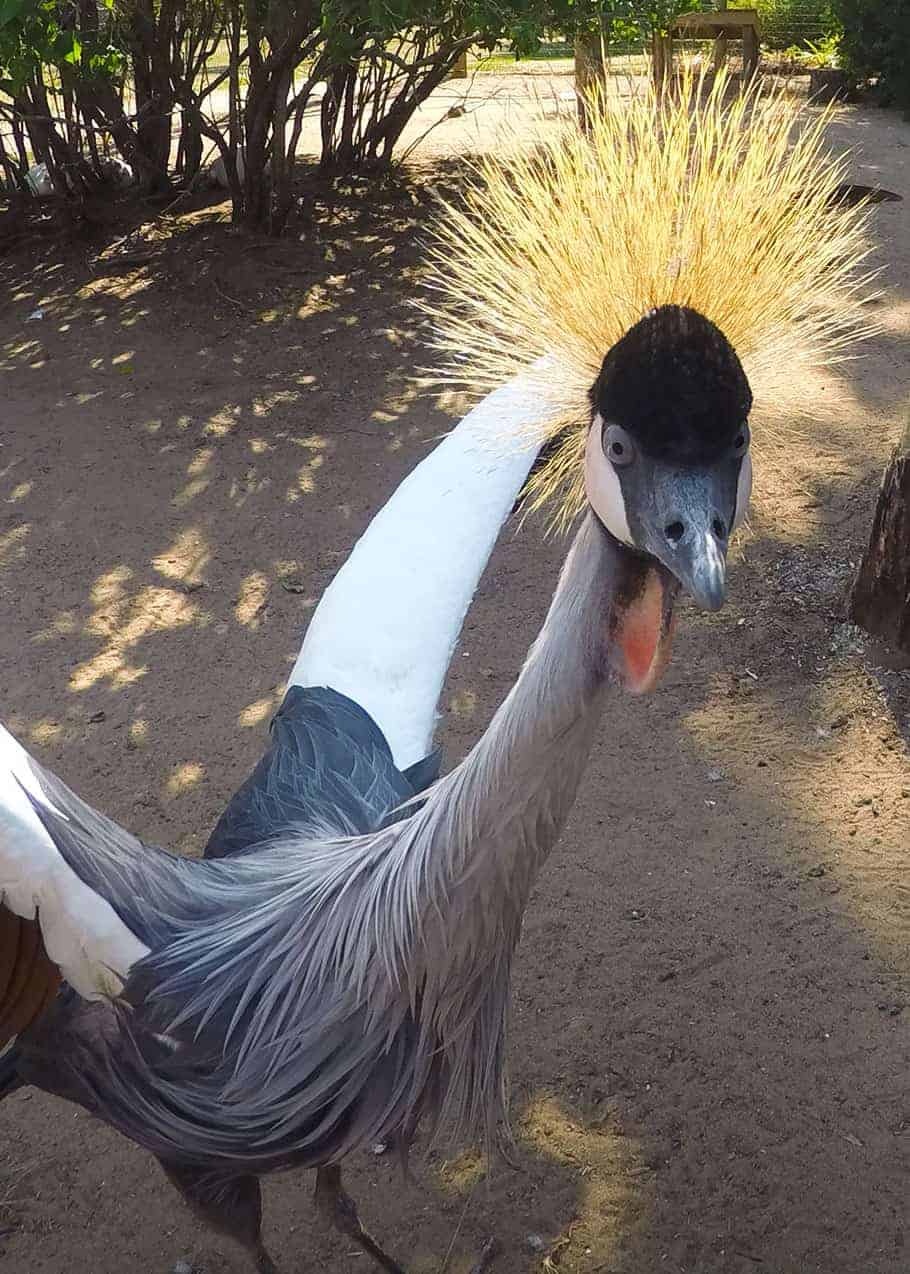
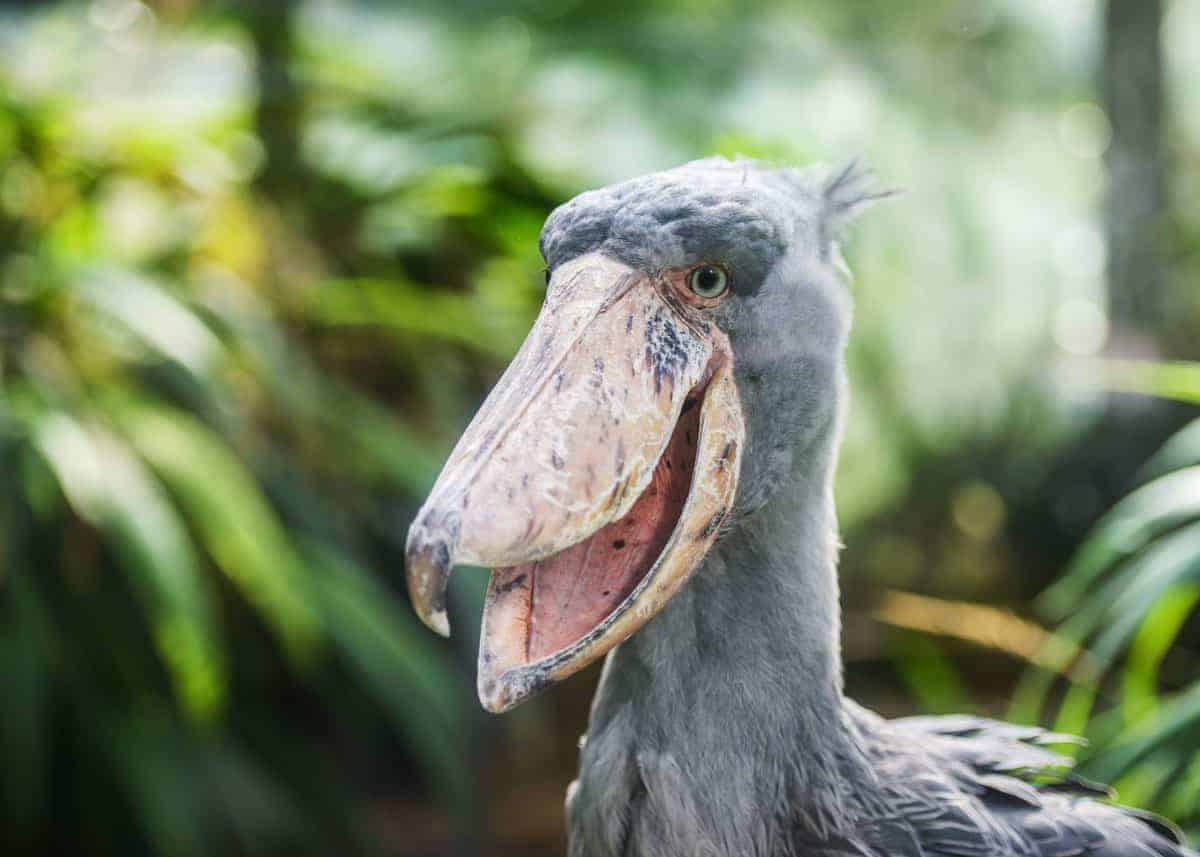
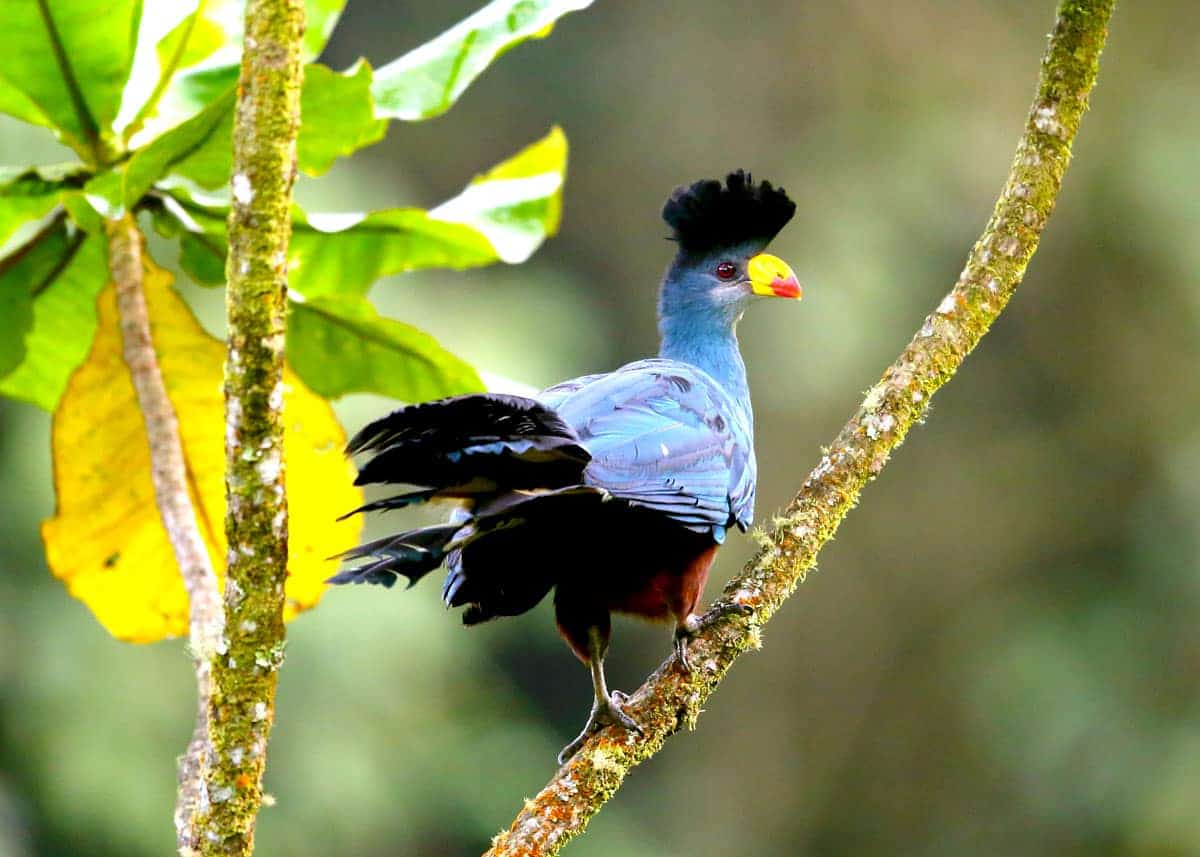
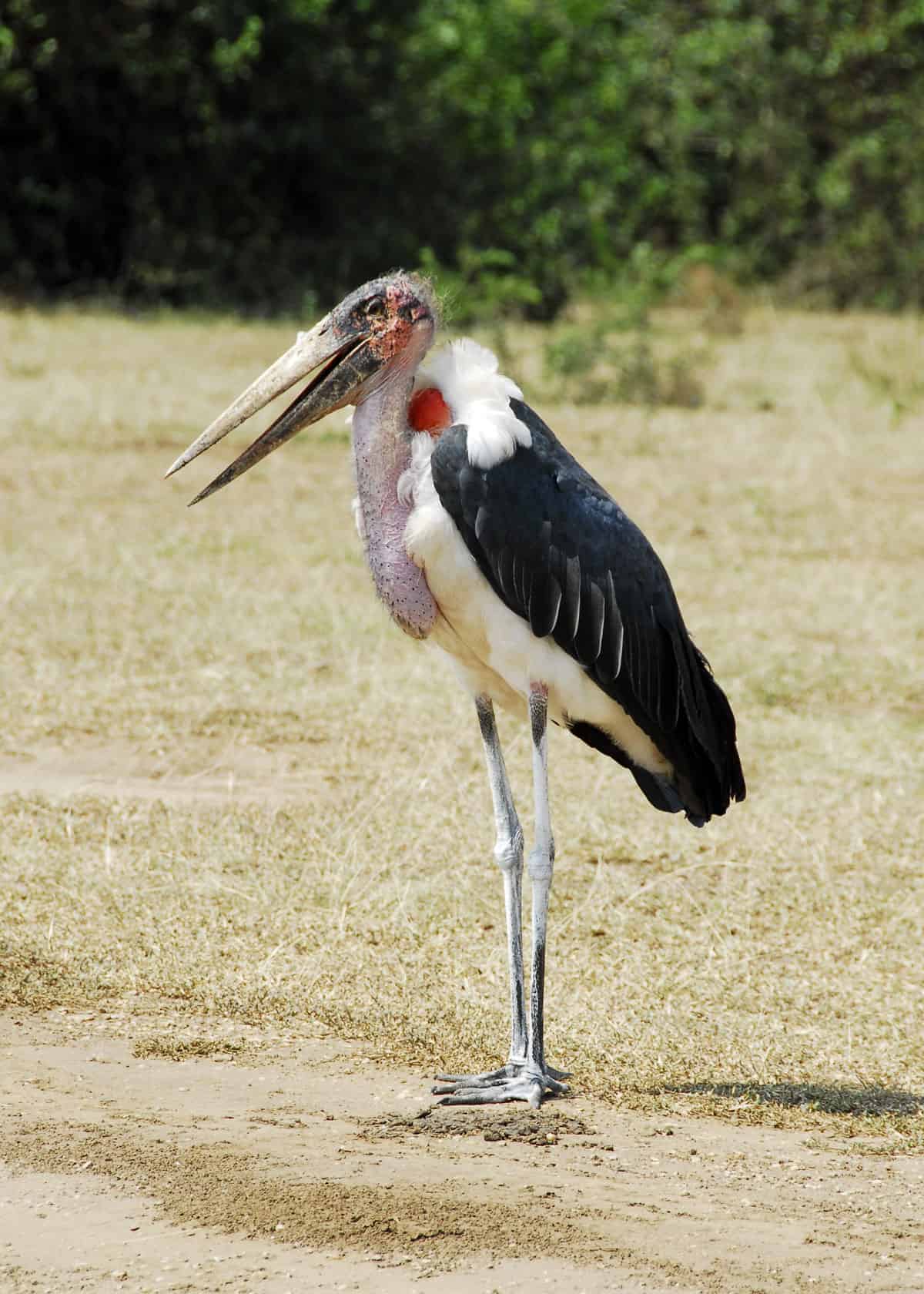
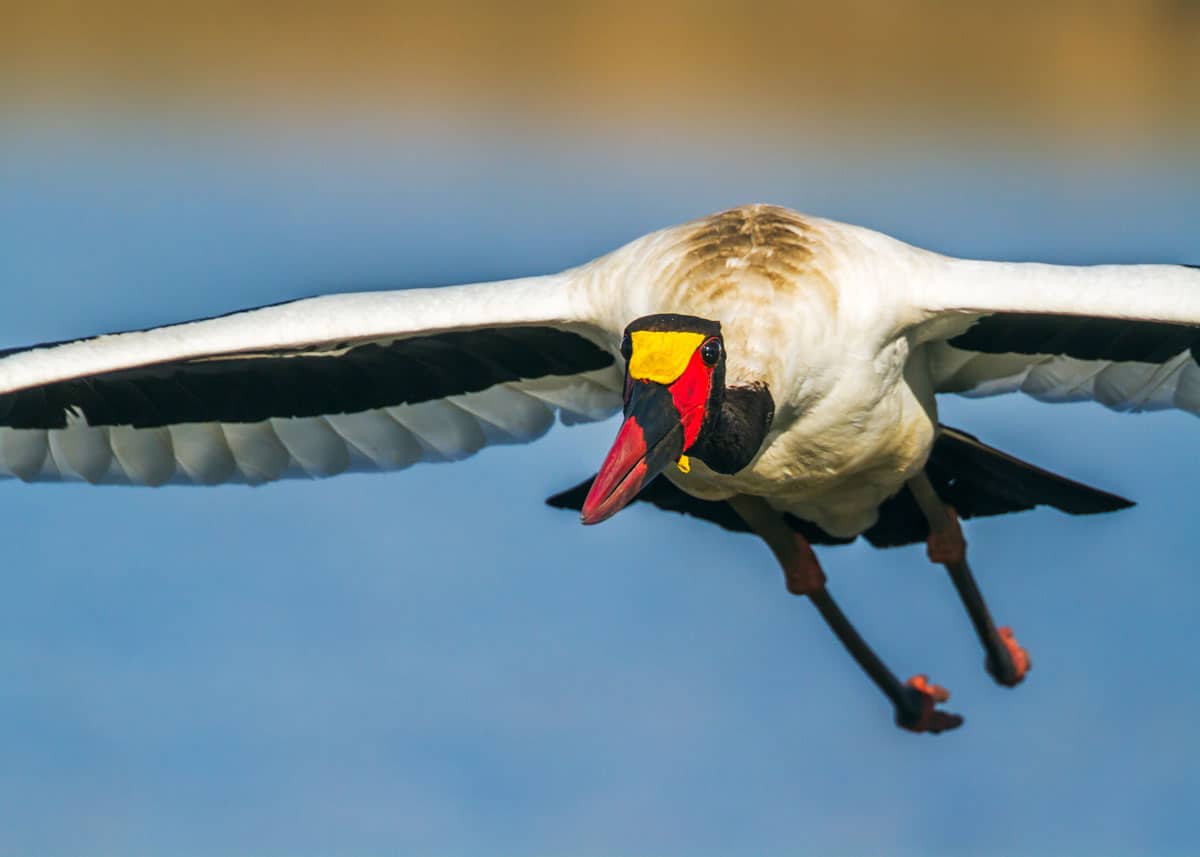
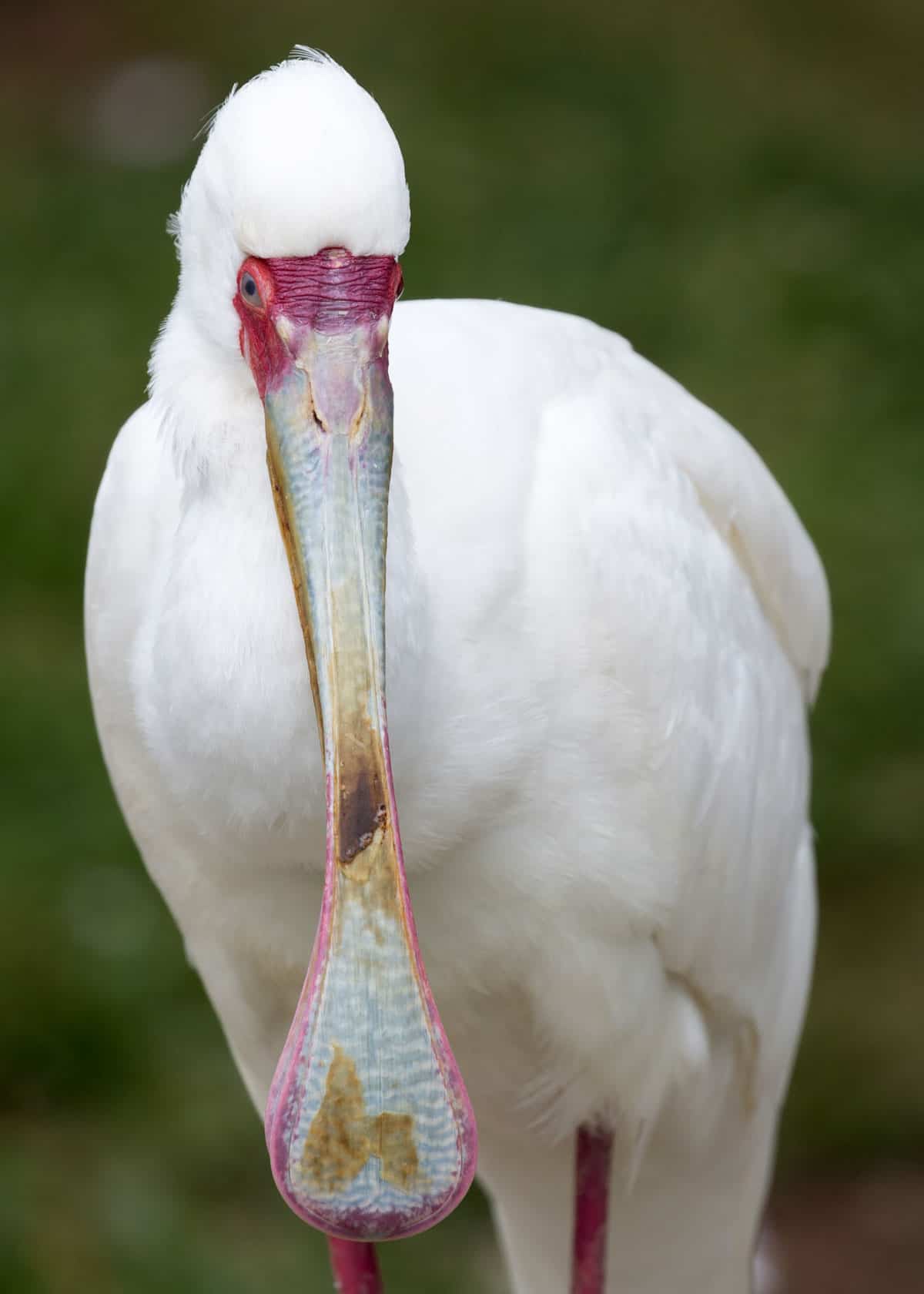
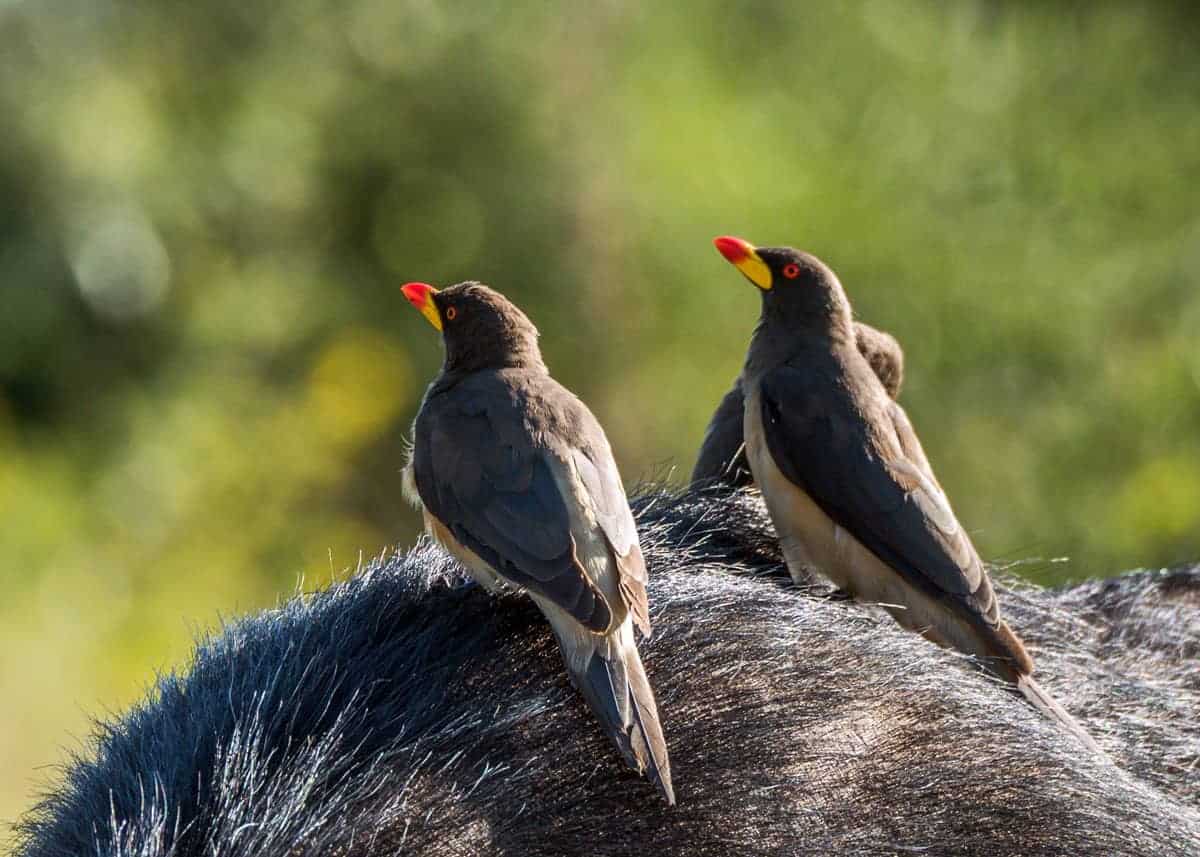
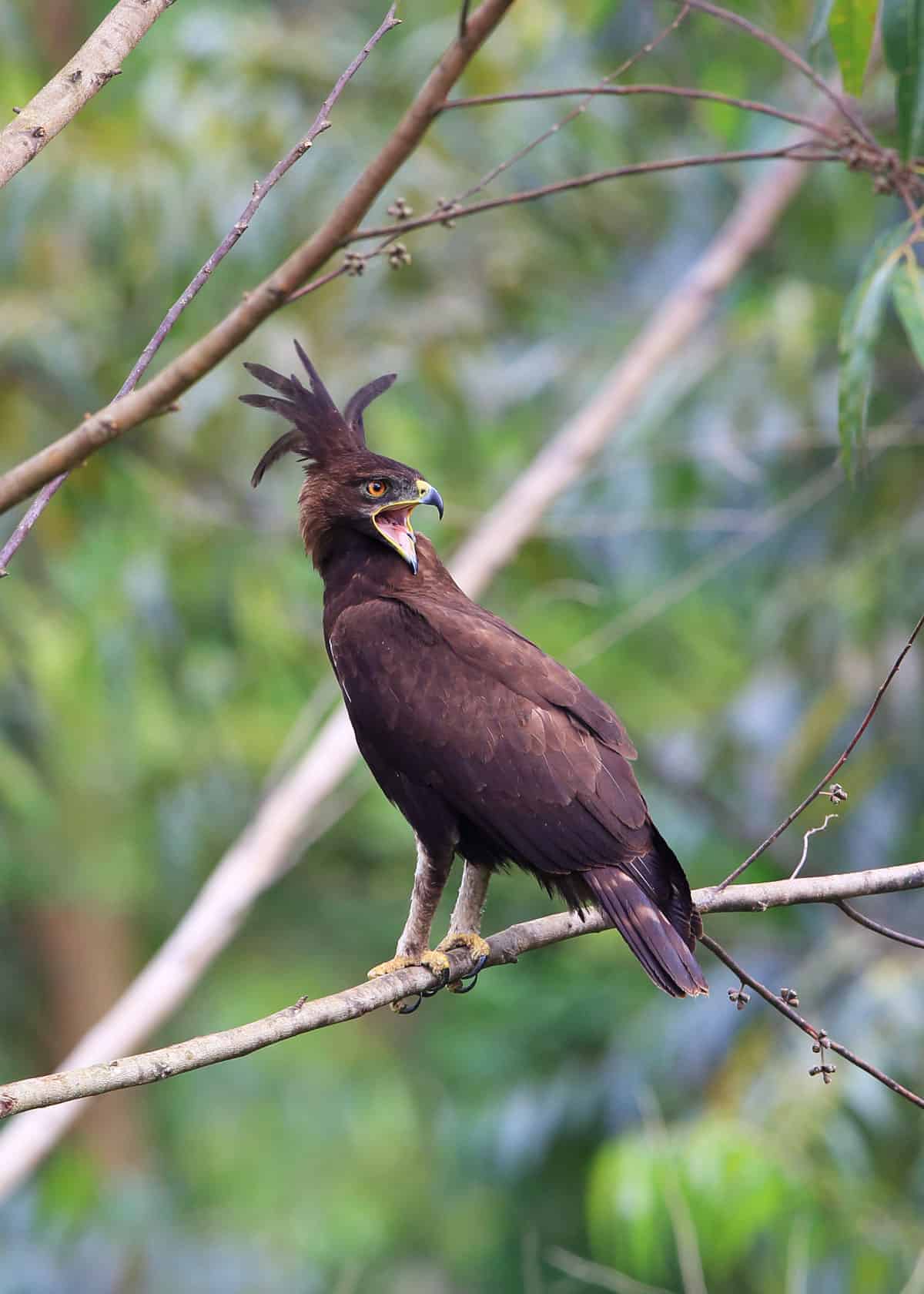
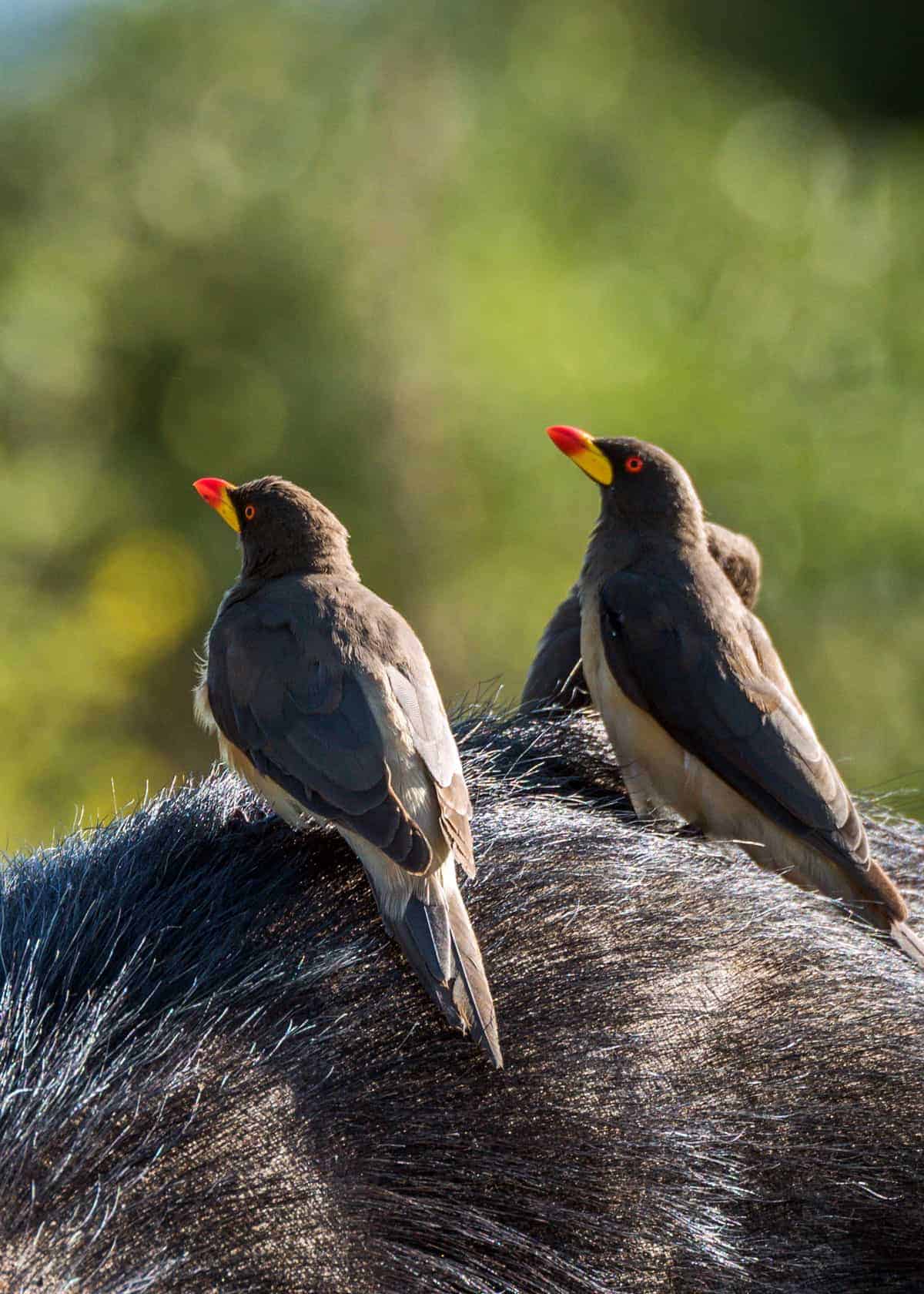
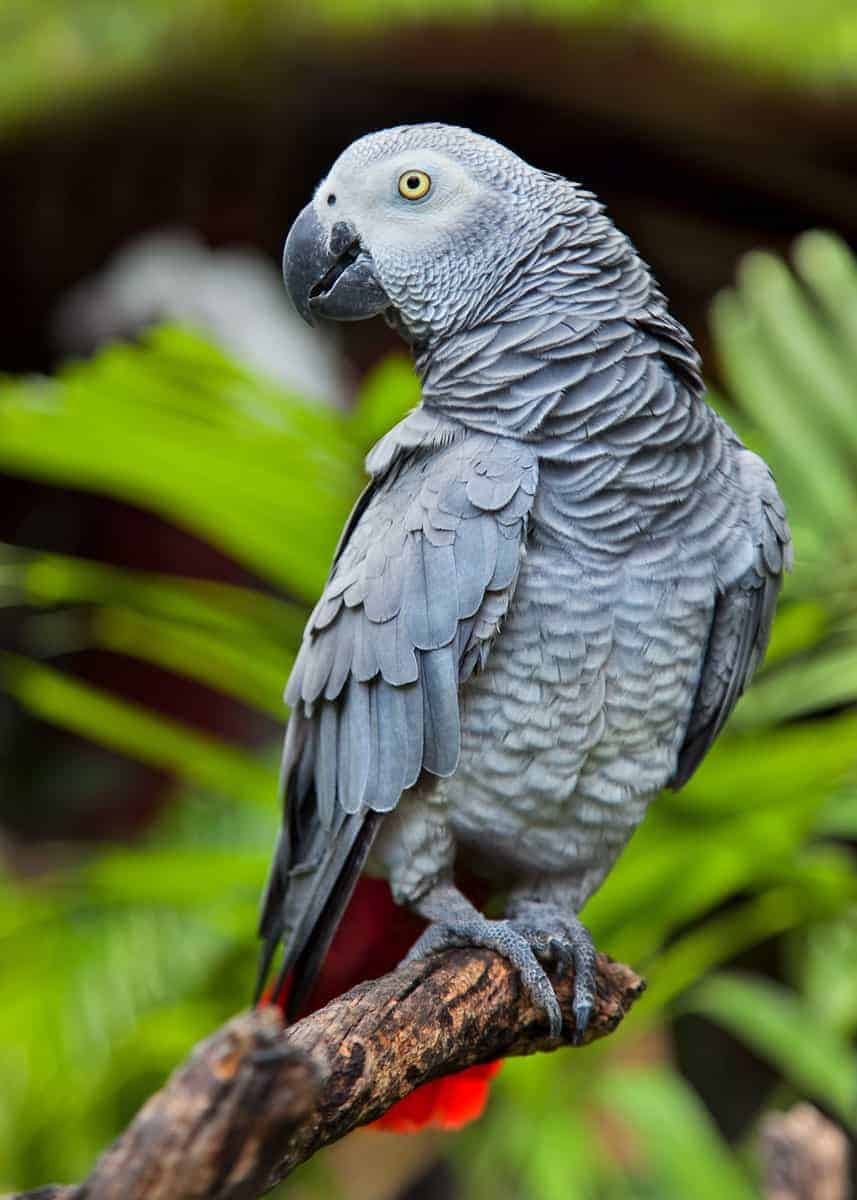

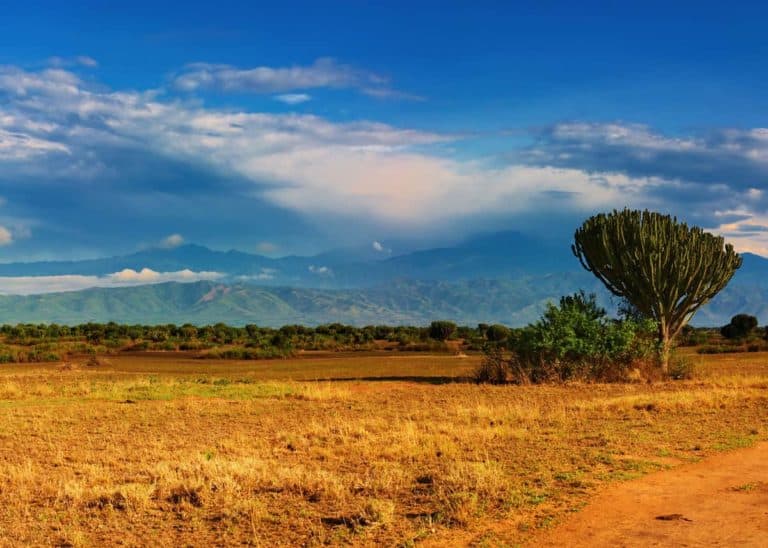




This is a very interesting articles about birds in Uganda. I’m happy to have landed on it.
I’m a bird lover and recently returned from a worthwhile trip in Uganda, with a bias on birds and gorillas.
Interesting animals